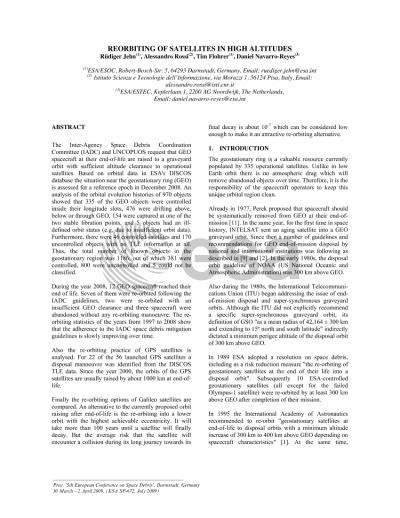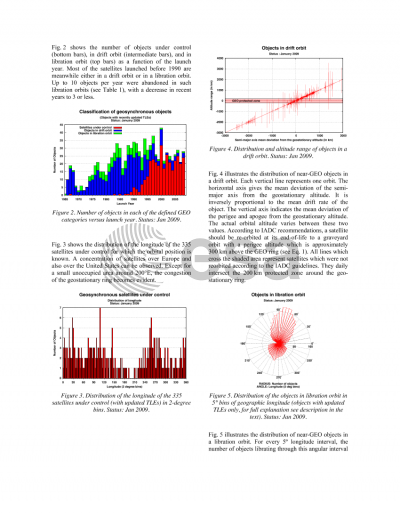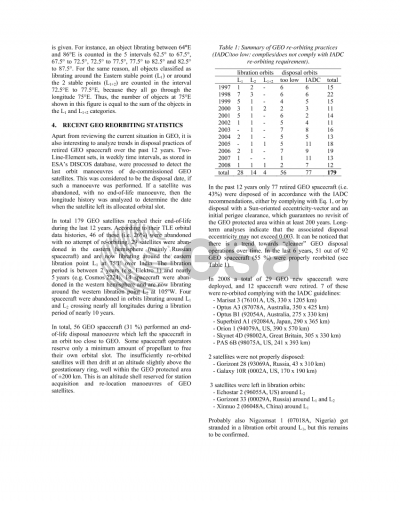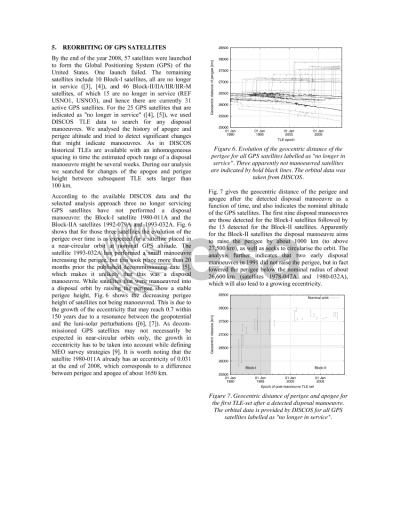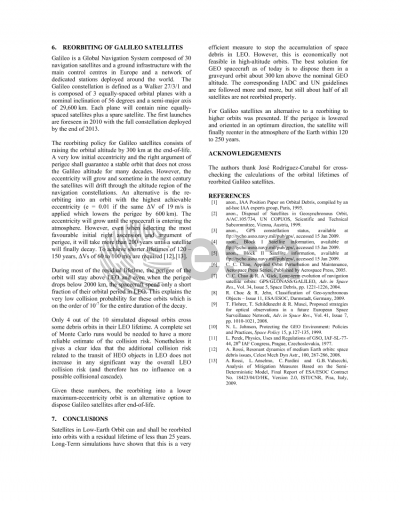Document details

Abstract
The Inter-Agency Space Debris Coordination Committee (IADC) and UNCOPUOS request that GEO spacecraft at their end-of-life are raised to a graveyard orbit with sufficient altitude clearance to operational satellites. Based on orbital data in ESA's DISCOS database the situation near the geostationary ring (GEO) is assessed for a reference epoch in December 2008. An analysis of the orbital evolution histories of 970 objects showed that 335 of the GEO objects were controlled inside their longitude slots, 476 were drifting above, below or through GEO, 154 were captured at one of the two stable libration points, and 5 objects had an ill-defined orbit status (e.g. due to insufficient orbit data). Furthermore, there were 46 controlled satellites and 170 uncontrolled objects with no TLE information at all. Thus, the total number of known objects in the geostationary region was 1186, out of which 381 were controlled, 800 were uncontrolled and 5 could not be classified.During the year 2008, 12 GEO spacecraft reached their end of life. Seven of them were re-orbited following the IADC guidelines, two were re-orbited with an insufficient GEO clearance and three spacecraft were abandoned without any re-orbiting manoeuvre. The re-orbiting statistics of the years from 1997 to 2008 show that the adherence to the IADC space debris mitigation guidelines is slowly improving over time.Also the re-orbiting practice of GPS satellites is analysed. For 22 of the 56 launched GPS satellites a disposal manoeuvre was identified from the DISCOS TLE data. Since the year 2000, the orbits of the GPS satellites are usually raised by about 1000 km at end-of-life.Finally the re-orbiting options of Galileo satellites are compared. An alternative to the currently proposed orbit raising after end-of-life is the re-orbiting into a lower orbit with the highest achievable eccentricity. It will take more than 100 years until a satellite will finally decay. But the average risk that the satellite will encounter a collision during its long journey towards its final decay is about 10-7 which can be considered low enough to make it an attractive re-orbiting alternative.
Preview
